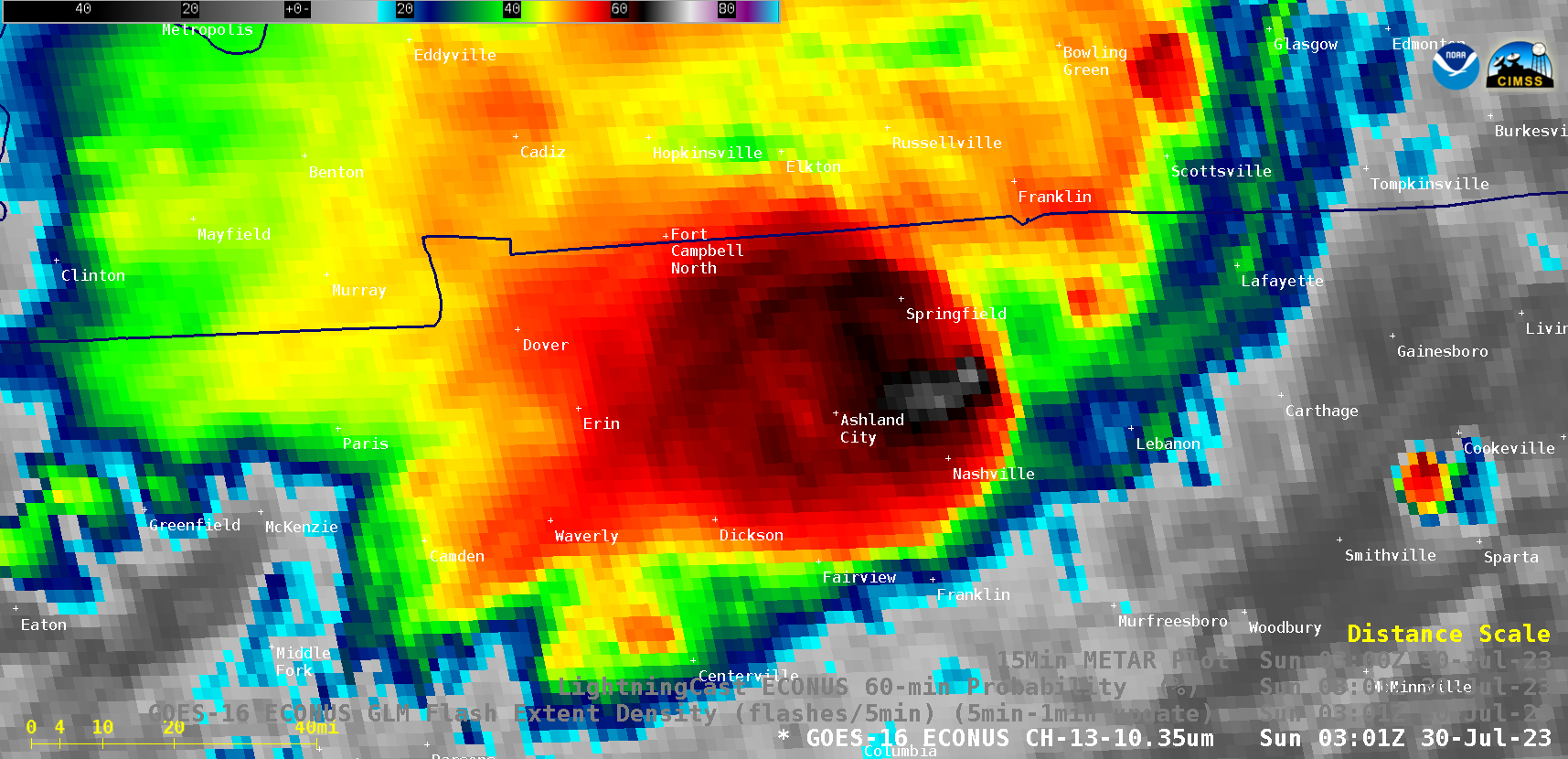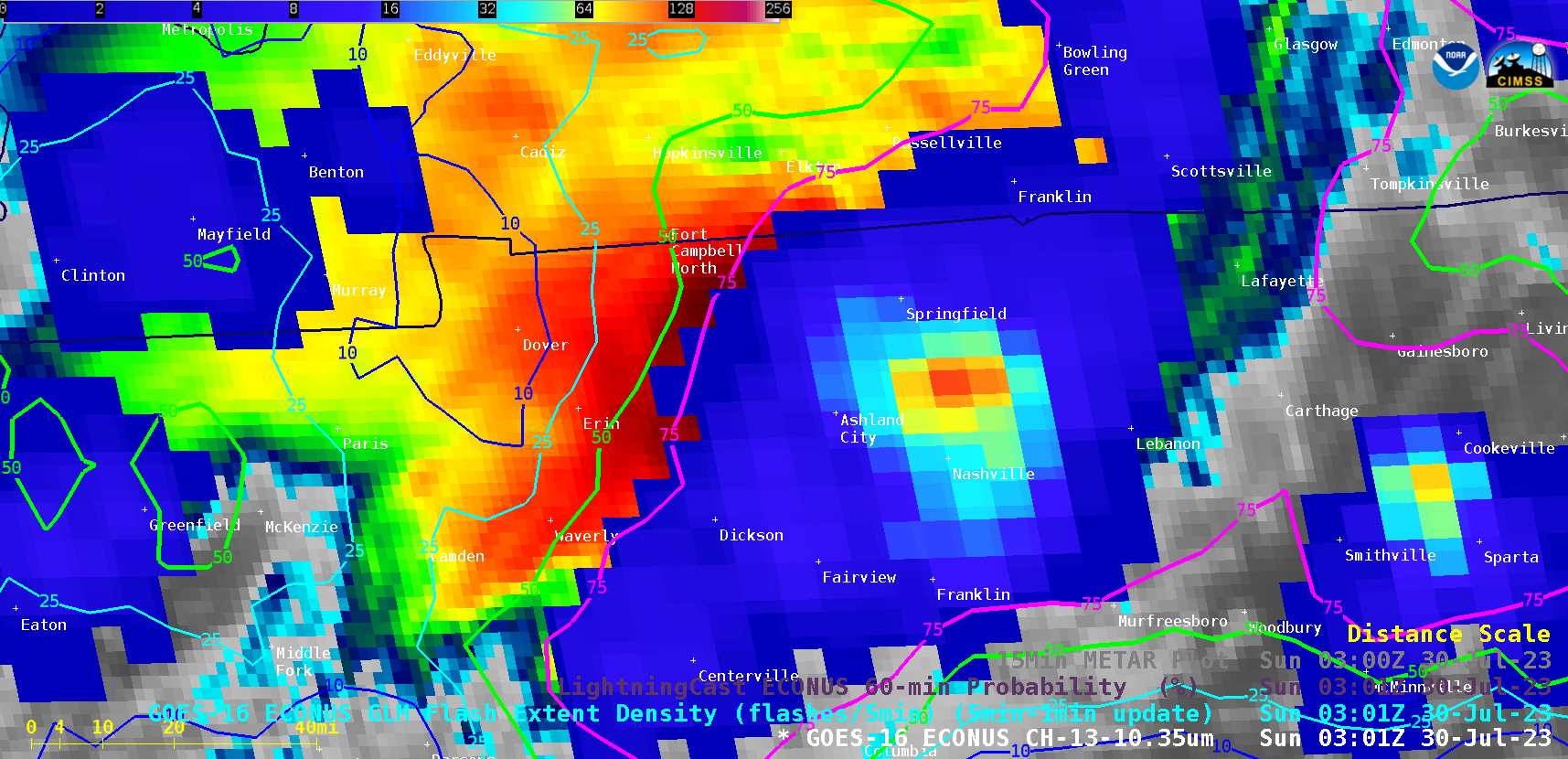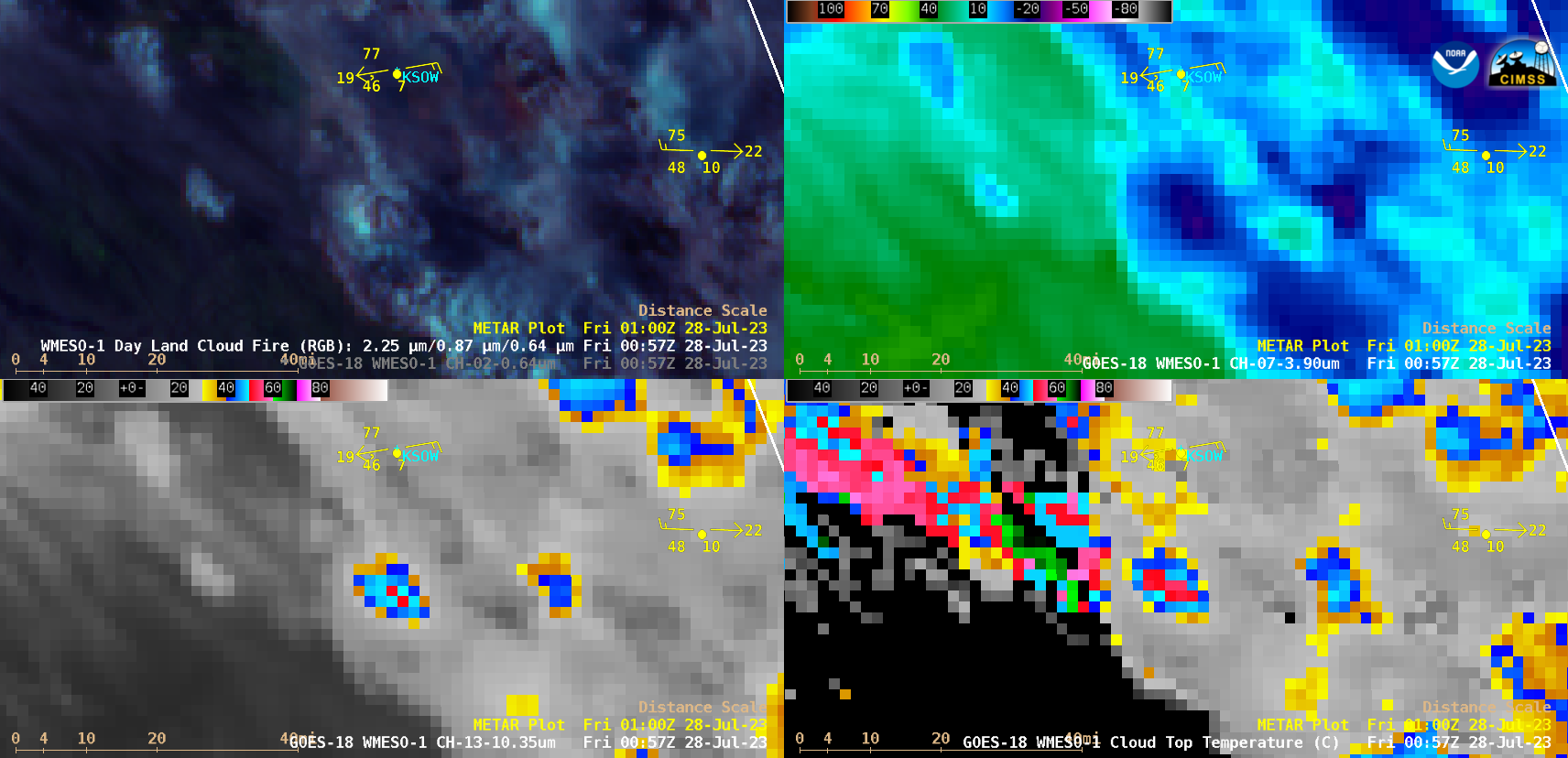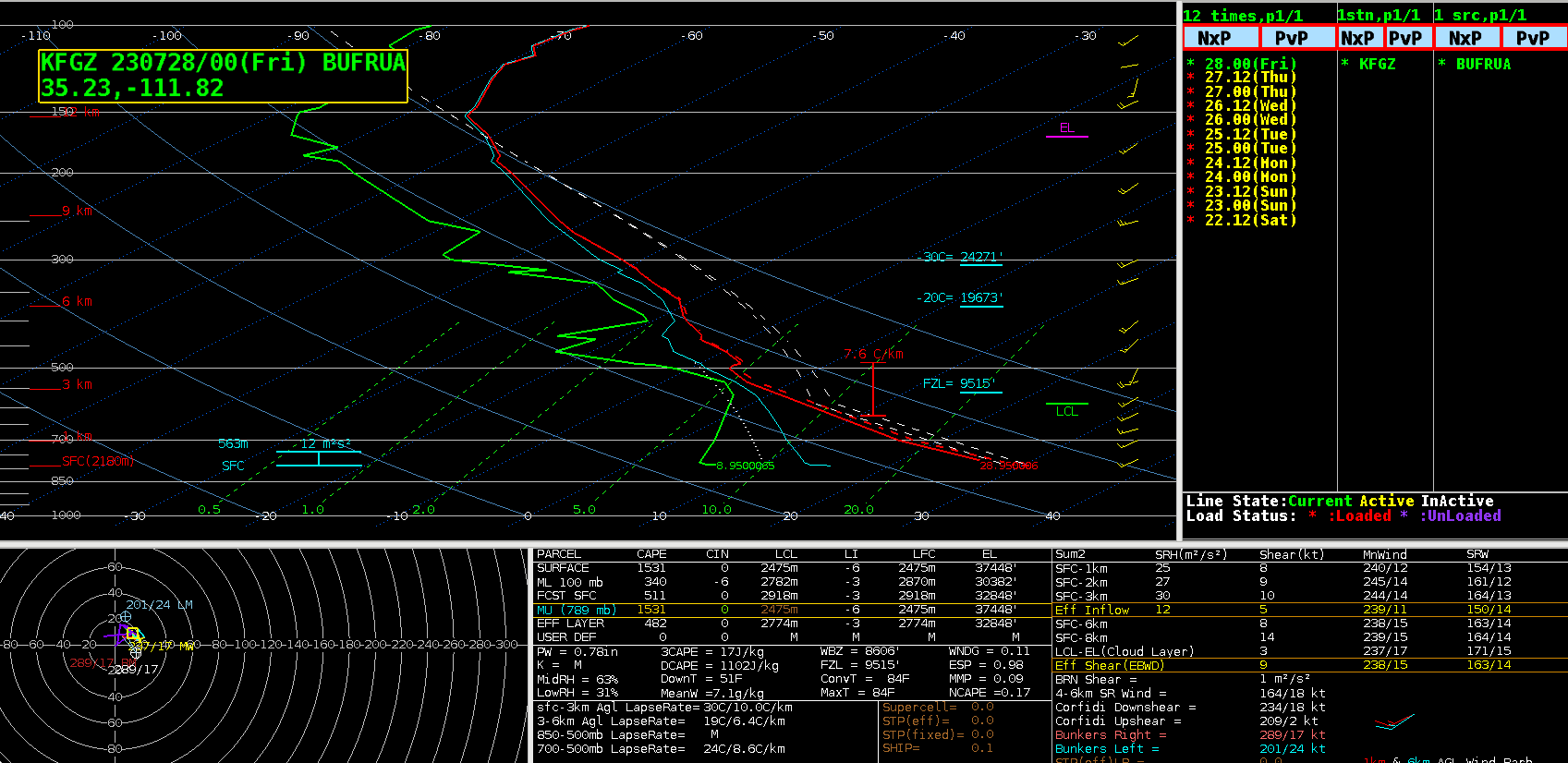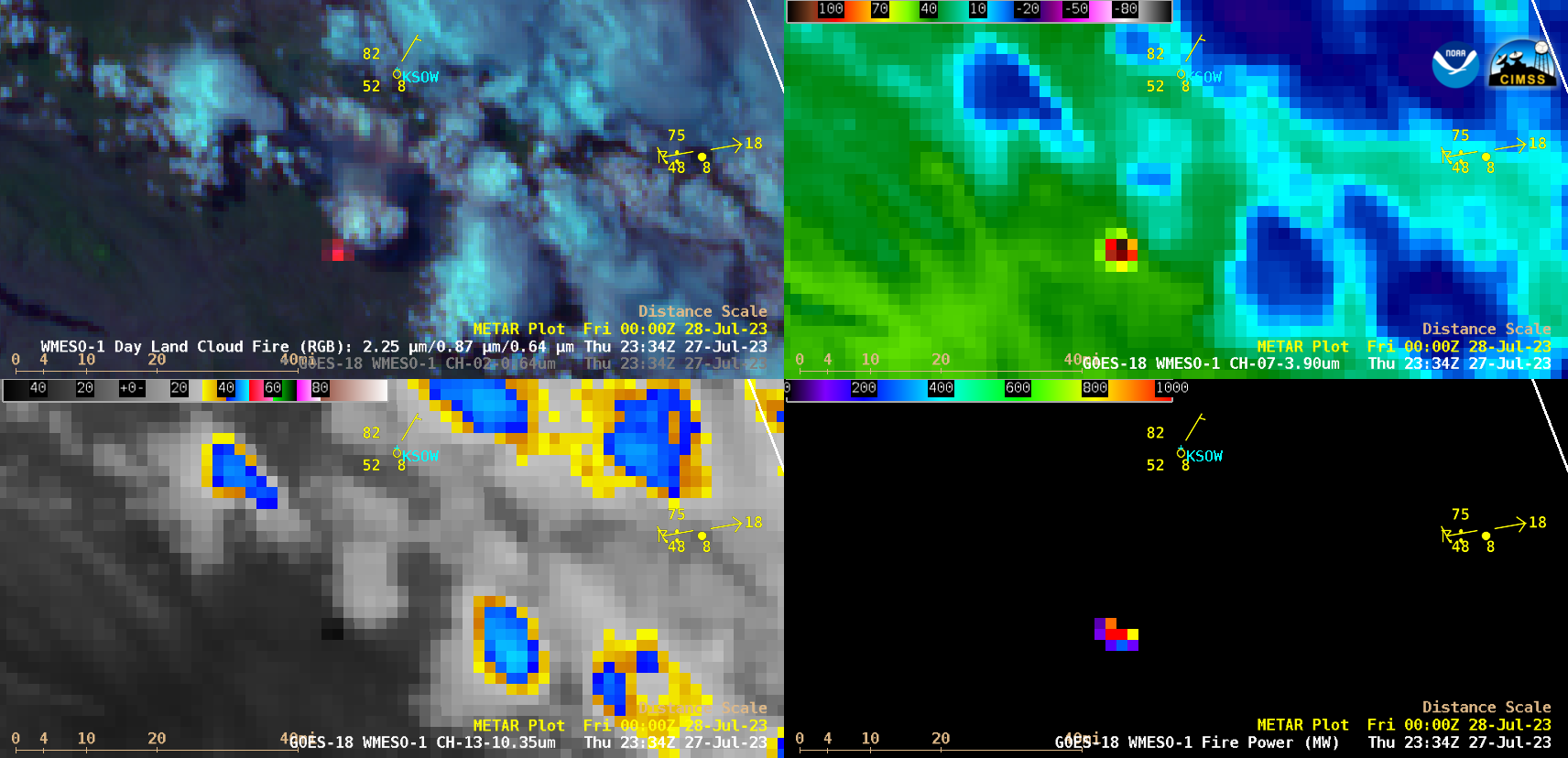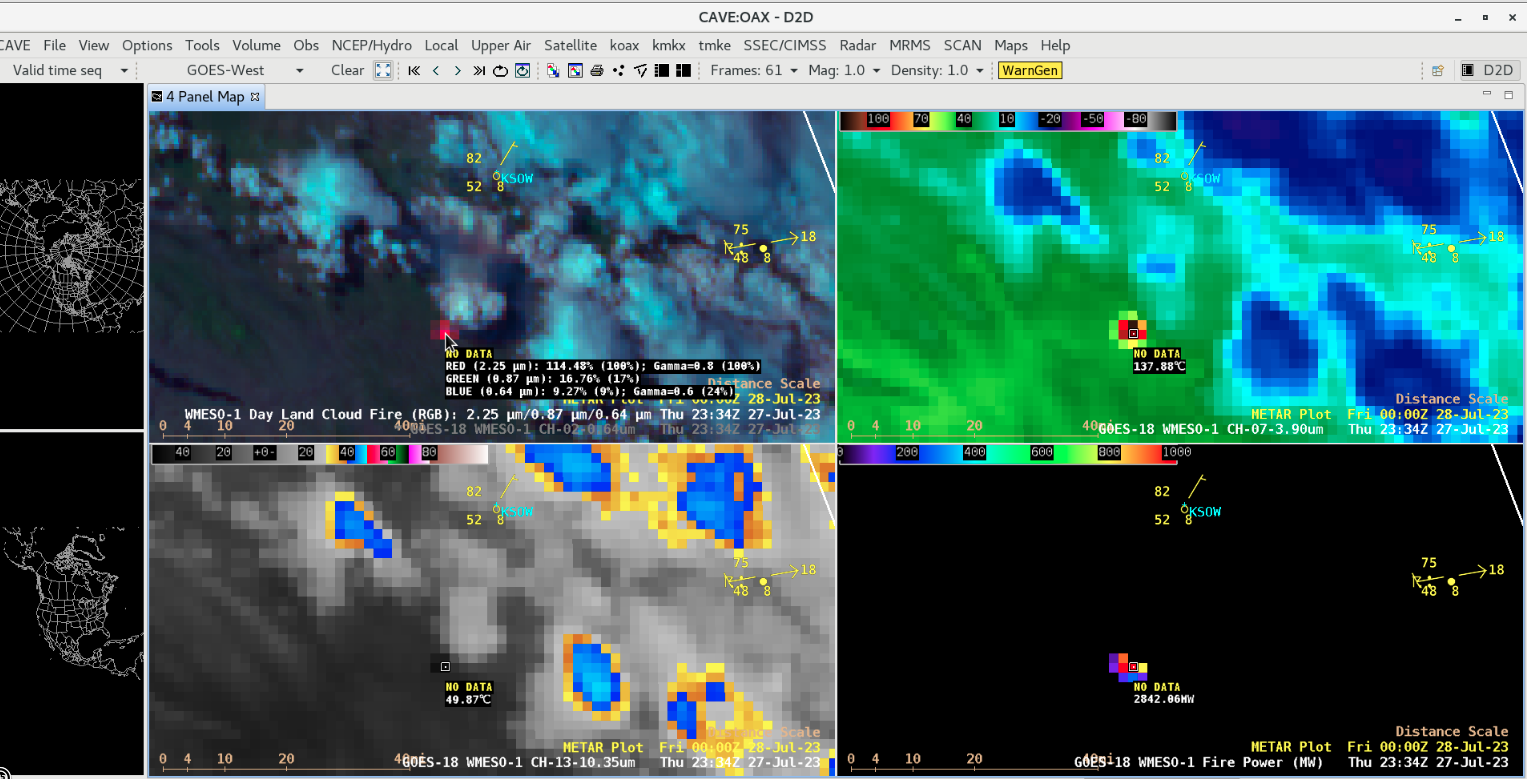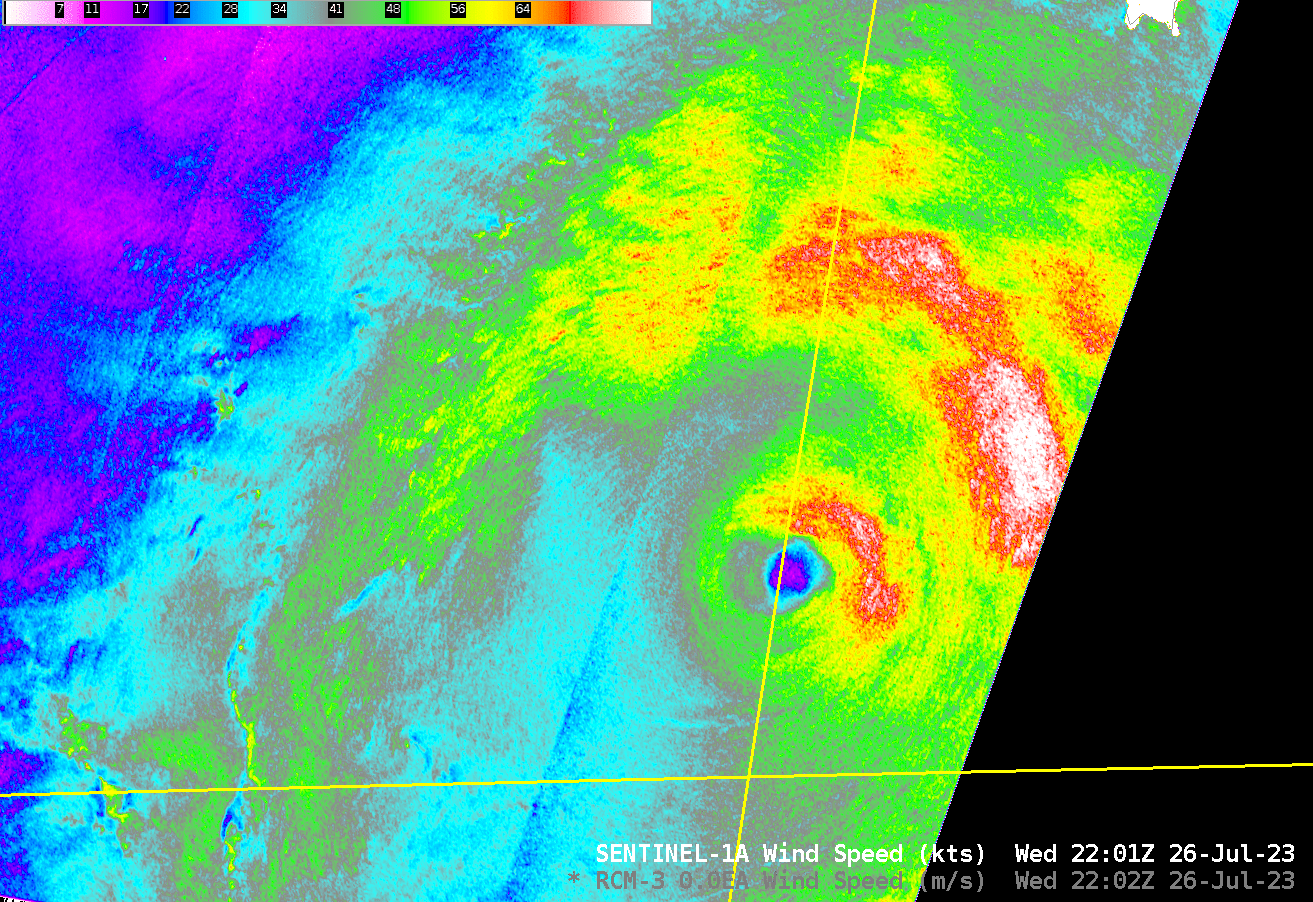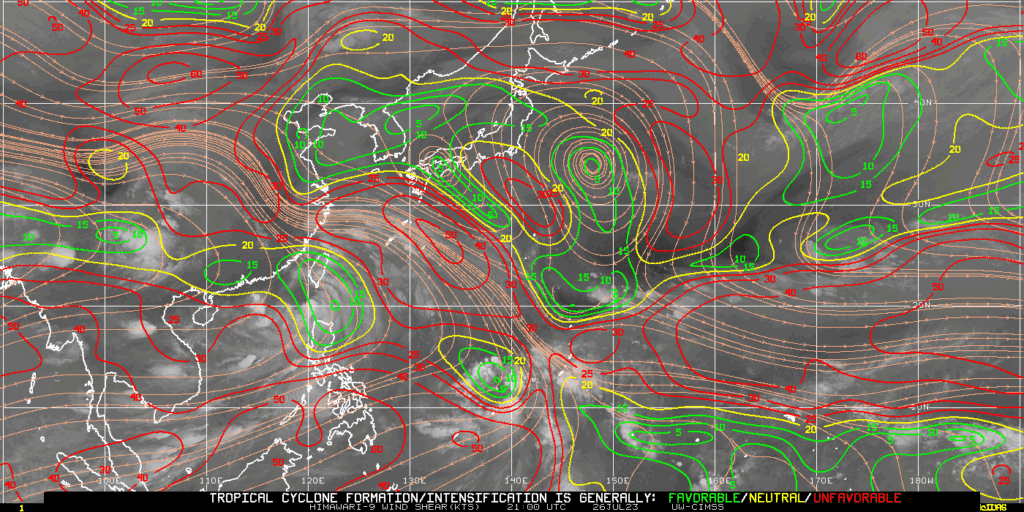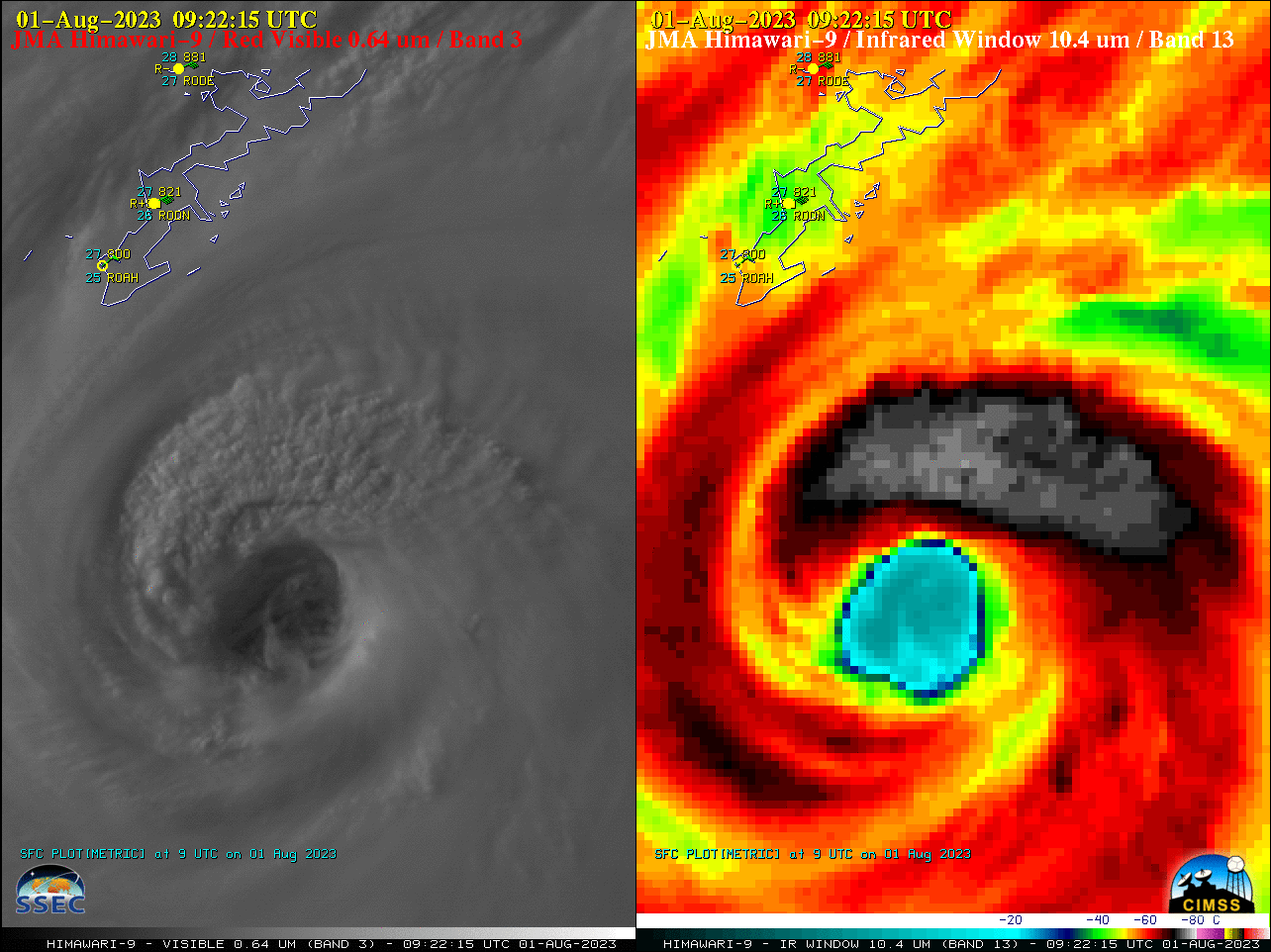
Target Sector (2.5-minute interval) JMA Himawari-9 AHI Visible and Infrared images (above) showed Category 4 Typhoon Khanun as it moved just south of Okinawa Island from 0502-1002 UTC on 01 August 2023. Visible images depicted mesovortces within the eye.During that 0502-1002 UTC time period, peak wind gusts at the 3 METAR sites located in... Read More
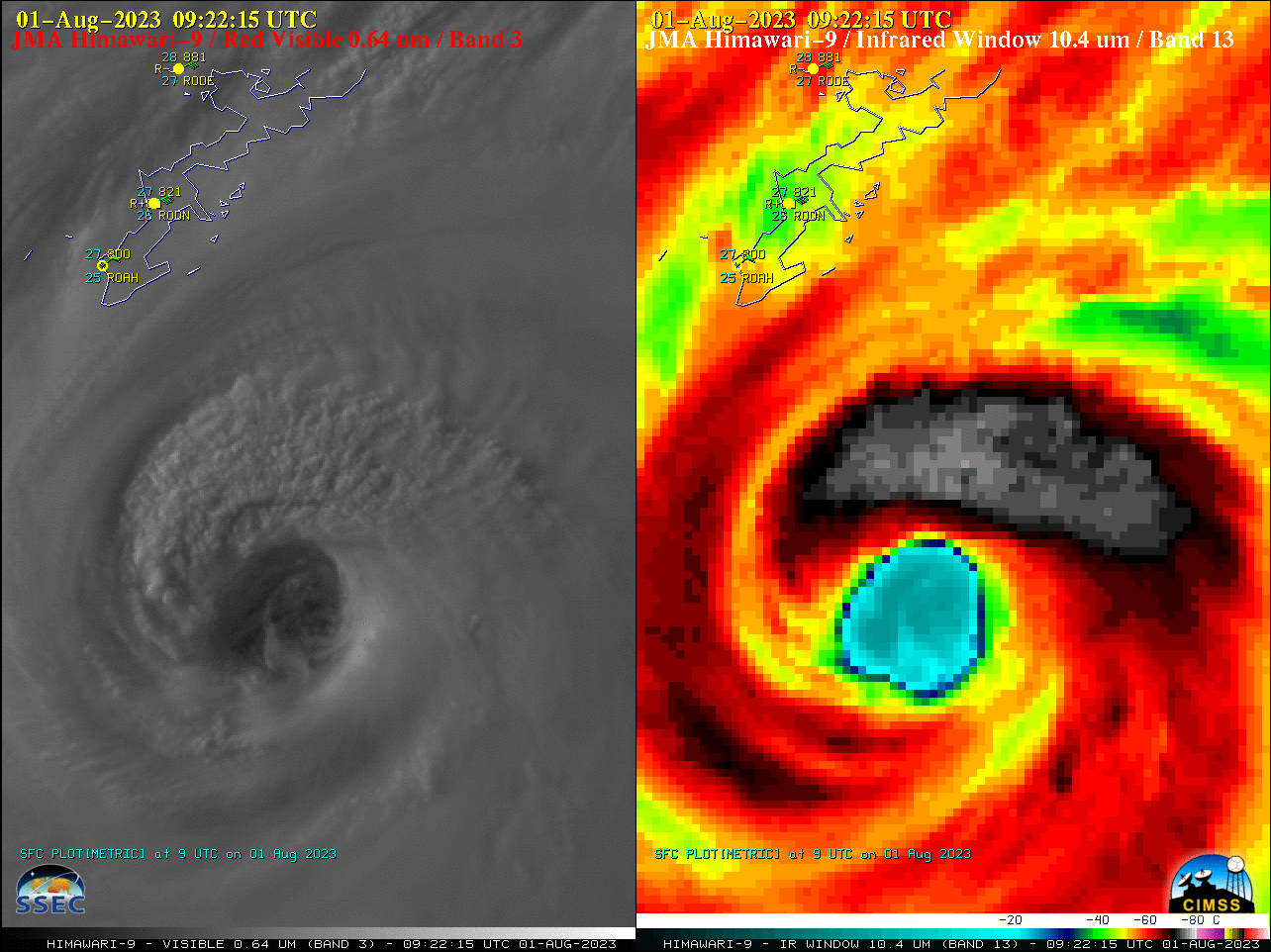
JMA Himawari-9 “Red” Visible (0.64 µm, left) and “Clean” Infrared Window (10.4 µm, right) images, from 0502-1002 UTC on 01 August [click to play animated GIF | MP4]
(2.5-minute interval)
JMA Himawari-9
AHI Visible and Infrared images
(above) showed Category 4 Typhoon Khanun as it moved just south of
Okinawa Island from 0502-1002 UTC on 01 August 2023. Visible images depicted mesovortces within the eye.
During that 0502-1002 UTC time period, peak wind gusts at the 3 METAR sites located in the southern part of the island were in the 70-78 knot range (below) — and soon thereafter reached 85 knots at Naha (ROAH) and Futenma (farther north, the peak wind gust at Kadena RODN was 76 knots).
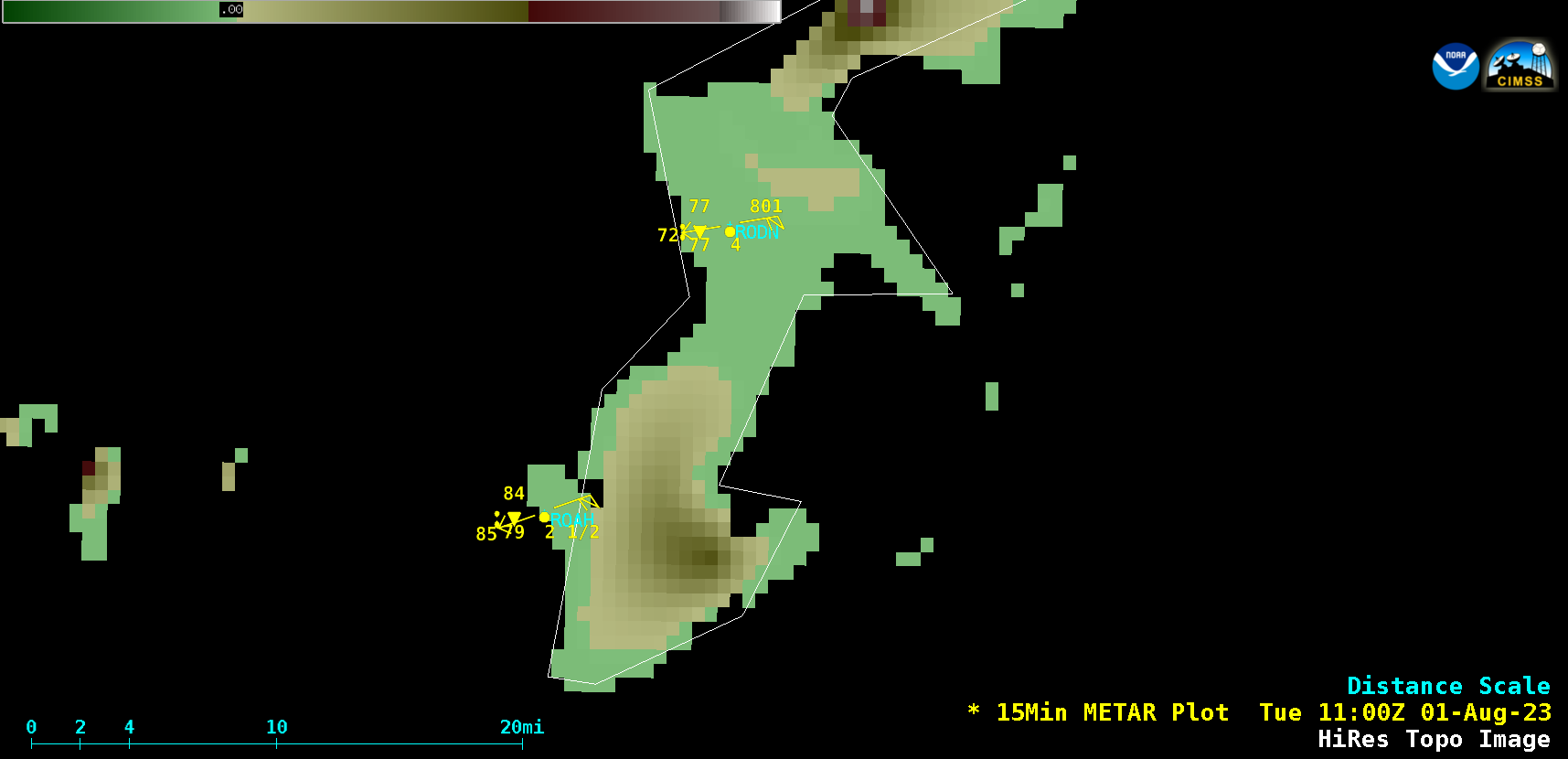
15-minute METAR observations on the island of Okinawa, from 0000-1830 UTC on 01 August [click to play animated GIF | MP4]
Synthetic Aperture Radar (SAR) winds (
source) from an overpass of RCM-3 at 0922 UTC
(below) did show a swath of strong winds — with speeds in the 80-90 knot range — north and northwest of Khanun’s eyewall, which was beginning to encroach upon the southern portion of Okinawa Island.
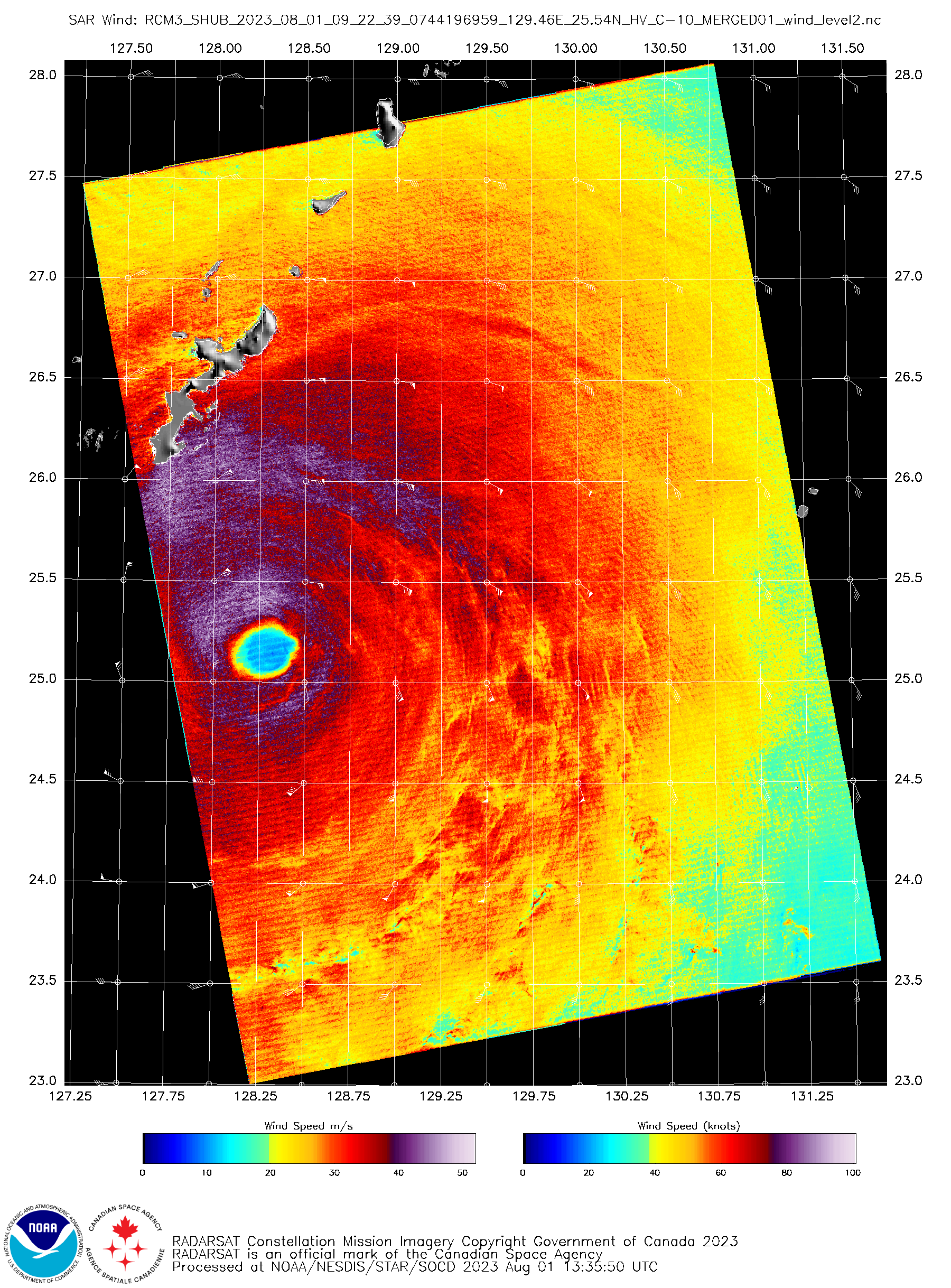
RCM-3 SAR winds at 09:22:39 UTC on 01 August [click to enlarge]
analysis using DMSP-16 SSMIS Microwave (85 GHz) imagery at 0848 UTC
(below) displayed an arc of colder brightness temperatures (shades of orange) just east of the southern end of Okinawa Island.

ARCHER analysis using DMSP-16 SSMIS Microwave (85 GHz) imagery at 0848 UTC [click to enlarge]
A larger-scale animation of Himawari-9 Infrared images covering a longer period of time
(below) revealed a small amount of trochoidal motion with the eye of Khanun — which is a behavior often seen with stronger tropical cyclones (for example,
here and
here).
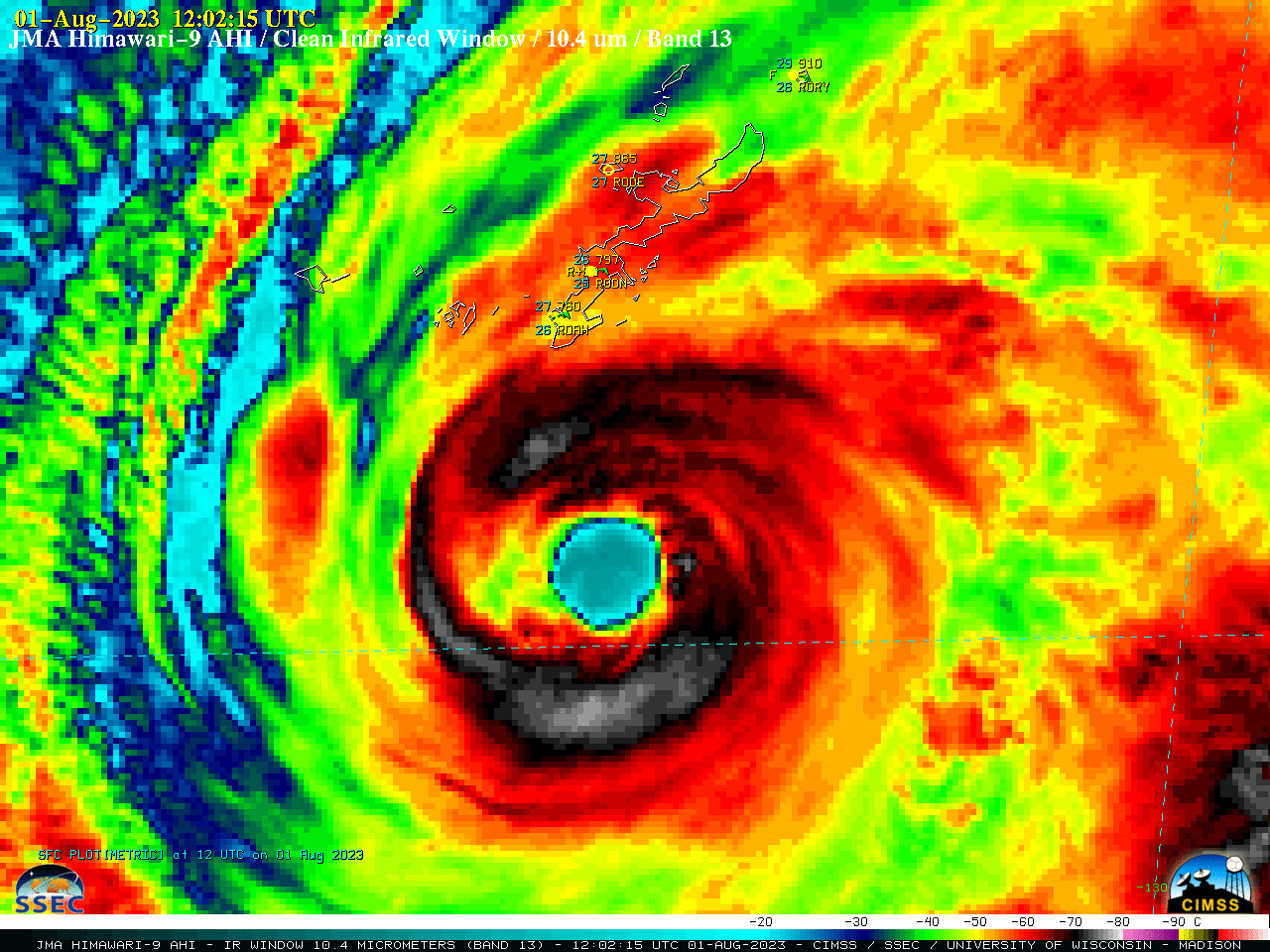
JMA Himawari-9 “Clean” Infrared Window (10.4 µm) images, from 2352 UTC on 31 July to 0222 UTC on 02 August [click to play animated GIF | MP4]
View only this post
Read Less









